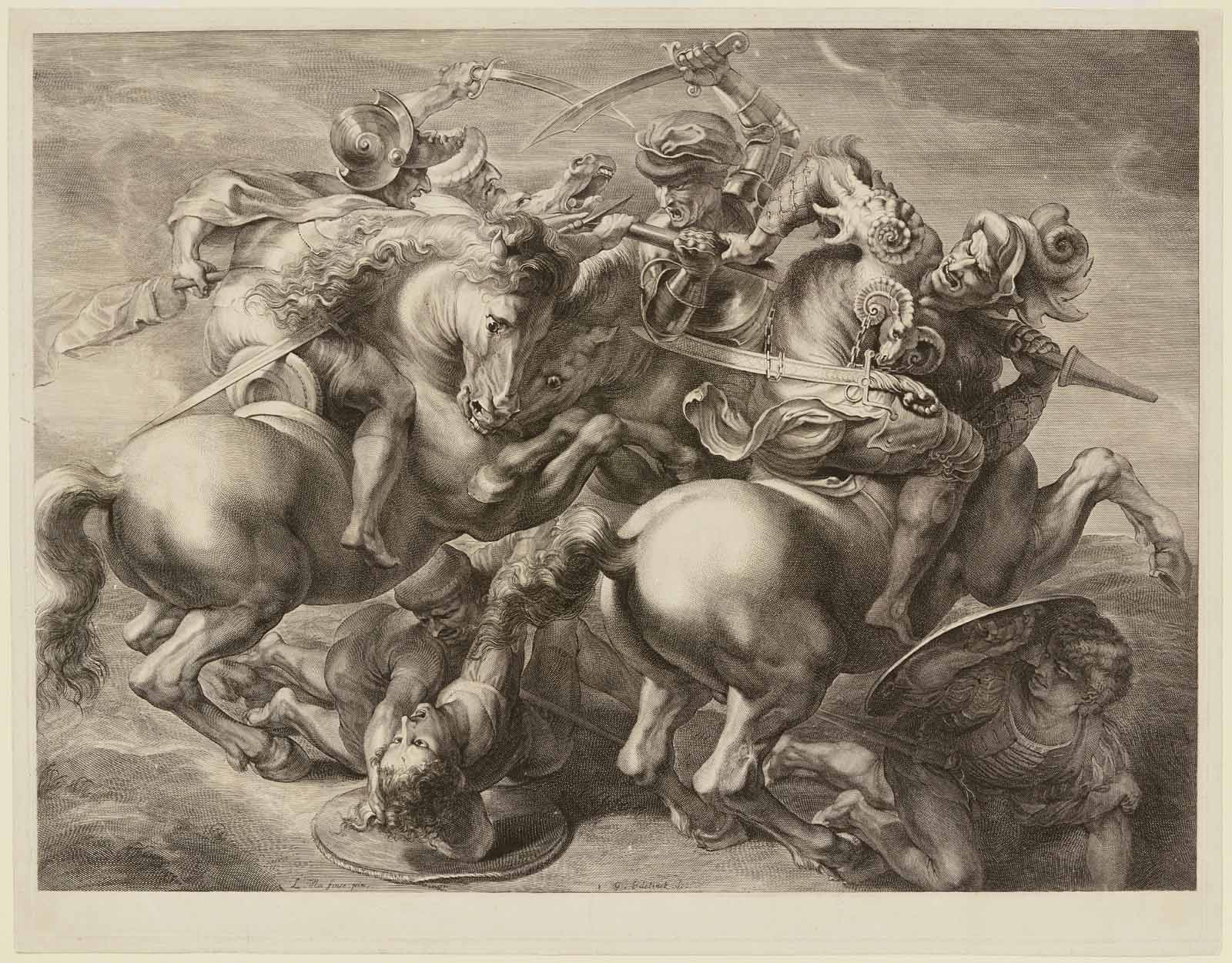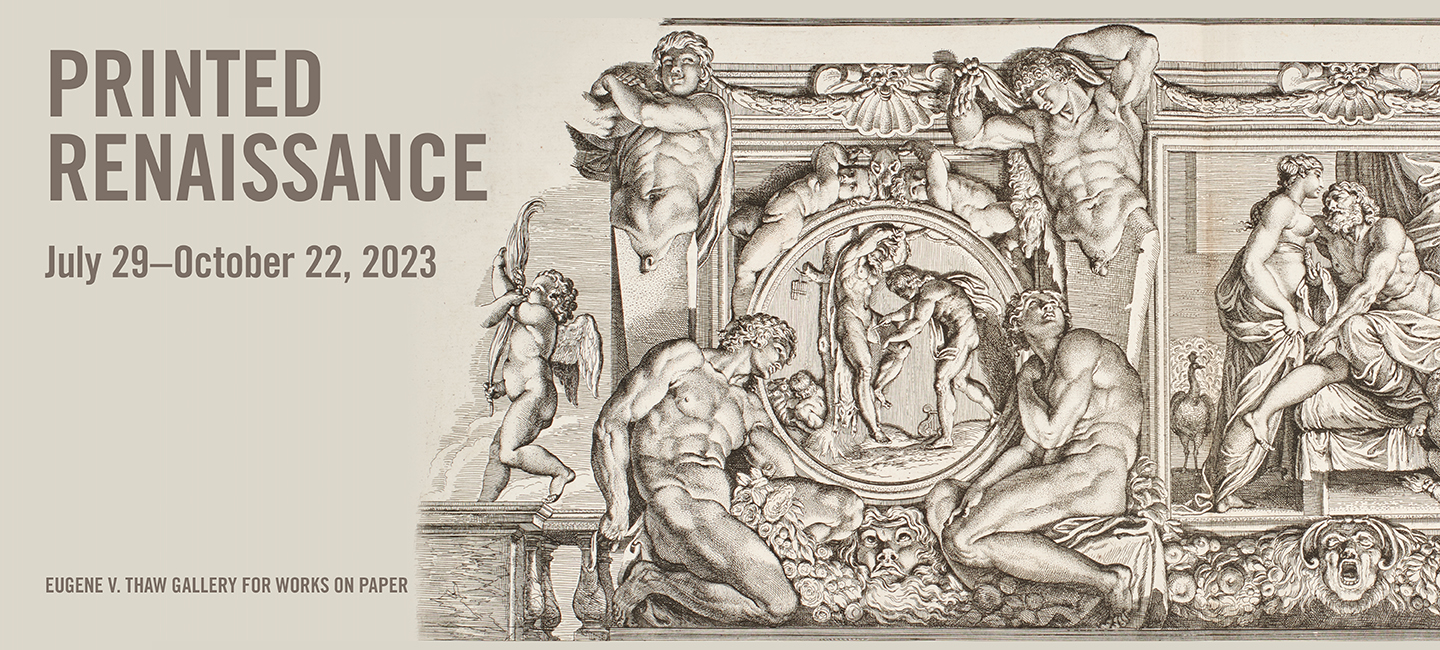Contesting the Canon
 Gérard Edelinck
Gérard EdelinckFlemish, 1640–1707
After Leonardo da Vinci
Italian, 1452–1519
The Battle of Anghiari
1657–1666
Engraving on paper
19 3/8 x 24 3/4 in.
The Clark, Gift of Richard Kent, 2017.5.12
From the sixteenth century on, the proliferation of prints and books encouraged artists and writers to discuss and debate the history of the visual arts in Italy. At the forefront of these debates was Giorgio Vasari, whose narrative on Italian Renaissance art has become a foundational historical view of art and gave rise to an artistic canon (a list of artists considered the greatest and most exemplary) in the collective memory of European culture. Vasari advanced an influential argument that the art of the Renaissance started and progressed in Florence before reaching a height in Rome with Raphael and Michelangelo. For centuries, this view of Italian art, centered on Florence and Rome, was perpetuated in the collective cultural memory of Western society, where prints and books circulated on an unprecedented scale. Many writers outside Florence and Rome challenged what they perceived as Vasari’s biased opinion, and artists from other parts of Italy also looked to their own tradition to learn, understand, and reclaim the diversity of Italian art. As a forum of art-historical discussion, printed texts and images have continued to nourish this competitive discourse, in which an artistic canon is slowly formed and repeatedly contested.
